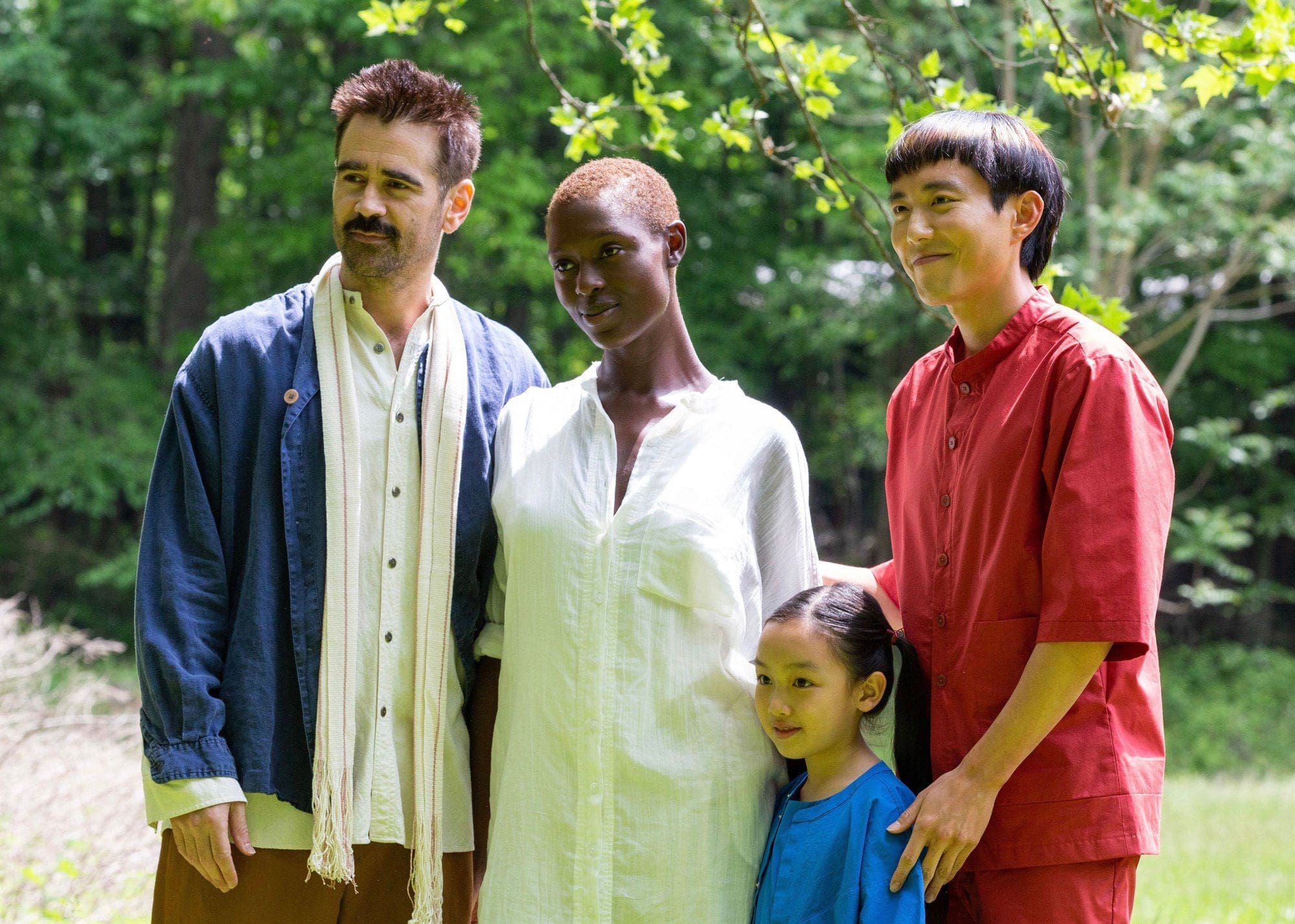
In 2017, director Kogonada released Columbus. Essentially a two-hander starring John Cho and Haley Lu Richardson as two people who form an unlikely connection over the titular city’s architecture, it was a quiet, beautiful meditation on finding one’s purpose and pursuing our passions. His latest film, After Yang, shares the same immersive thoughtfulness.
Adapted by the director from Alexander Weinstein’s short story, “Saying Goodbye to Yang”, jt follows a family led by Jake (Colin Farrell) and Kyra (Jodie Turner-Smith) living in a near future where lifelike androids have become ubiquitouss. In this case, that android is Yang (Justin H. Min), a big brother-esque companion Jake and Kyra purchased to help raise and connect their adopted daughter Mika (Malea Emma Tjandrawidjaja) to her Chinese culture. When Yang suddenly shuts down one night, Jake’s attempts to fix him lead him and the audience on a journey that explores loss, memory and what it means to be human.
In part, what made Columbus so engrossing was its gentle pacing. With its long takes and wide shots, it forced the audience to exist in the same spaces as the film’s characters and engage in the same level of contemplation. After Yang‘s style is almost the exact opposite.
Kogonada (who is also the film’s editor) uses brief shots to give us an impression of a scene or place. At first, the technique can be a bit disorienting. Rather than a linear narrative, it can feel like we’re watching a sad collage of grief as Jake slowly comes to terms with the possibility that Yang may be gone forever. That feeling is only compounded by how reserved Farrell and Turner-Smith’s performances can be. When the couple argues about what to do about Yang, it feels like we learn more from their mutual quiet resentments than anything they actually say. However, when Jake learns a surprising secret about Yang later in the film, it suddenly becomes clear that the brief shots Kogonada uses to tell the story aren’t just a stylistic choice, but essential to the film’s core point.
It’s a bit tough to talk about that point without spoiling the gradual revelations that ultimately make After Yang such a satisfying viewing experience, but suffice to say those quick flashes of imagery are integral to what the film says about memory. Within the wold of the film, human connection is not so much about remembering whole swaths of time in a clear way, but the accumulation of brief memories. As Jake revisits Yang’s life with the family, it’s not necessarily major experiences that define their love and connection, it’s the intimate moments.
One of the best comes when Jake, who owns a failing tea shop, recalls a day when Yang asked him why he devoted his life to the drink. Complete with a charming Werner Herzog impression, Jake reminisces about watching a documentary that profoundly changed his ideas about tea and set him on the path to making it his vocation. While the scene is already a memory about a memory, Kogonada takes it a step further through his filmmaking. Unlike most of the film, the scene is made up of longer takes with more direct connection between each shot. However, he lso makes the fascinating choice to use multiple edits of the same line readings one after the other during the scene. While it can be jarring, what he’s doing is emphasizing the mutability of memory. Memories are influenced by our emotions and by watching Jake or Yang say something with slightly different inflections in each shot, the meaning shifts slightly each time.
It’s a really rewarding choice, but it’s worth noting that Kogonada can only make it because the actors in the scene have given Kogonada so many versions to work with. While Farrell’s is the most prominent performance, every actor in After Yang does subtle, intelligent work that allows Kogonada to pull deep meaning from the concept. With a simple inflection, Turner-Smith conveys Kyra’s frustrations even through seemingly innocuous lines. Likewise, Min’s straightforward readings convey Yang’s essential artificiality just as often as his undeniable humanity. Indeed, it’s the humanity that suffuses the whole film that ultimately makes it so impactful.
Yang is technically an android, but the film never questions whether his emotions are real or valid. They simply are and by having both the characters and the audience accept that, After Yang manages to explore major ideas like loss and memory in a way that feels profound without also feeling self-important. As a filmmaker, Kogonada’s approach is soft and deliberate. In Columbus, it was easy to understand how he could create such a real and intimate human story because his characters were just normal people dealing with normal circumstances. And while After Yang is certainly more high concept, that same commitment to real emotions grounds the film in reality. The result is somehow both deeply moving and unexpectedly uplifting.

